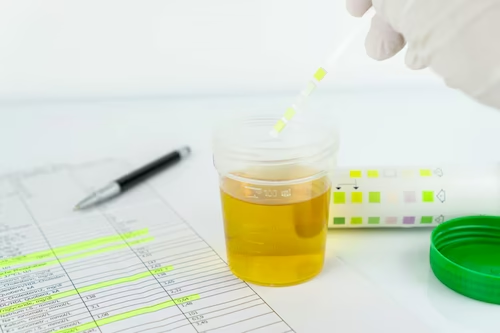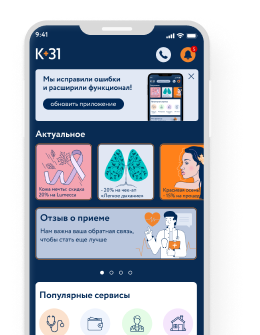Urea norm in biochemical analysis (UREA)
Urea is a substance that plays a huge role in protein metabolism. The main difference of any protein is the presence of a large amount of nitrogen as a chemical element. During metabolism, this nitrogen is released, and ammonia is formed from it - one of the most toxic for the body. Formed on the periphery, it enters the liver, where, under the action of special enzymes, it turns into less toxic urea, which is sent to the kidneys and excreted in the urine.
UREA is a key indicator of the excretory capacity of the kidneys. If their function is impaired, then this compound does not pass the renal filter and is retained in the vascular bed. The norm is 2.5 – 8.3 mmol/l. In middle-aged people, the indicator should not exceed 6.9 – 7.2. A number of laboratories identify different upper limits for men and women: 7.1 and 6.8, respectively.

specialists

equipment

treatment
Urea norm in biochemical analysis (UREA)

Normal values may vary depending on:
- Diet (protein-rich foods)
- Intensity of physical labor;
- Taking a number of medications (hormone therapy)
Excess may indicate:
- Renal pathology (acute inflammation and exacerbation of chronic, associated with infection, intoxication, autoimmune diseases)
- Dysfunction of the urinary system associated with obstruction of the normal outflow of urine (stones, tumors of the ureters, bladder, urethra)
- Systemic oncological processes (metastases, tumor lesions of the red bone marrow)
- Severe somatic conditions (cardiac and respiratory failure)
Extensive injuries (especially with muscle compression), burns, frostbite, poisoning, severe infections also lead to an increase in concentration.

It is necessary to take into account that with all the above pathologies, other changes (characteristic symptoms, shifts in accompanying studies) should be present in the clinical picture. Isolated increase is quite rare and requires repeated determination.
A decrease in the level indicates violations of protein and nitrogen metabolism. Sometimes this condition is more dangerous than high numbers. This is associated with liver disease (cirrhosis, hepatosis, hepatitis), which is not able to neutralize ammonia and convert it into less toxic compounds. The toxin accumulates and has a pronounced negative effect.
Low values are observed in exhausted patients.
Blood should be donated when symptoms such as:
- Edema
- Back pain
- Cloudy urine or other impurities
- Dysuric disorders (frequent, painful urination)
- Changes in general tests
If a diagnosis has already been established, the doctor himself determines the indications for the study. As a rule, the level of creatinine, bilirubin and total protein is determined in parallel for a comprehensive assessment of the pathological process.
Our doctors

This award is given to clinics with the highest ratings according to user ratings, a large number of requests from this site, and in the absence of critical violations.

This award is given to clinics with the highest ratings according to user ratings. It means that the place is known, loved, and definitely worth visiting.

The ProDoctors portal collected 500 thousand reviews, compiled a rating of doctors based on them and awarded the best. We are proud that our doctors are among those awarded.
Make an appointment at a convenient time on the nearest date













